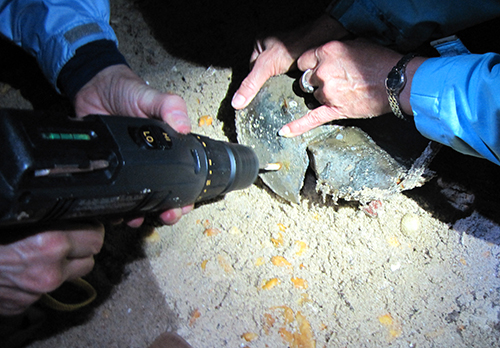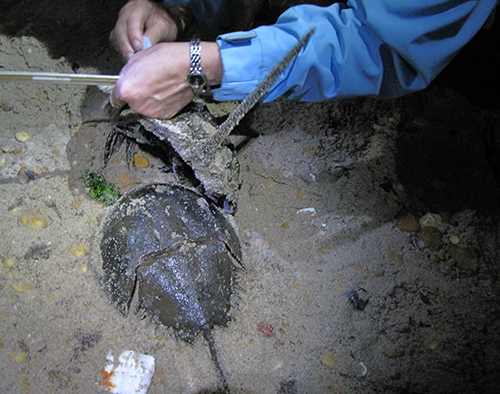Surveying and Tagging Horseshoe Crabs at on the South Shore of Raritan Bay
JUNE 17, 2016--Although horseshoe crabs resemble crustaceans, they are primitive marine arthropods considered living fossils. Their eggs are important dietary items for shorebirds including the red knot, which double their weight during migration feeding on these eggs.
Fish, invertebrates and sea turtles also eat their eggs and larvae. Horseshoe crabs feed on clams and worms. Horseshoe crabs are in decline in part due to their use in biomedical research, as bait and due to habitat degradation. They reach sexual maturity in about 10 years and can live about 20 years. During high tide in May and June on the full and new moons, horseshoe crabs spawn in mass along sandy beaches. On June 5, NOAA's Assessment and Restoration Division and Restoration Center participated in surveying and tagging horseshoe crabs at Cliffwood Beach on the south shore of Raritan Bay. NOAA volunteered with the Bayshore Watershed Council who has been monitoring horseshoe crabs at five locations along the bay since 2009. Cliffwood Beach is nearest to the Raritan Bay Slag Superfund Site. Data collected will be used to support restoration planning.
For more information contact Lisa.Rosman@noaa.gov.
Go back to OR&R Weekly Report.


